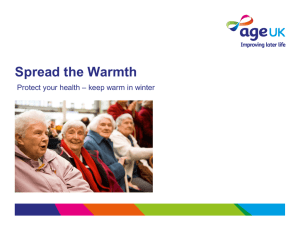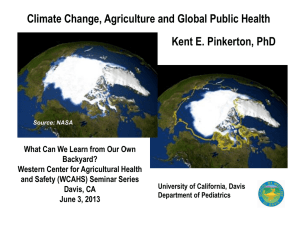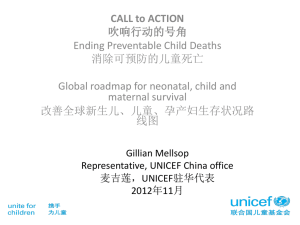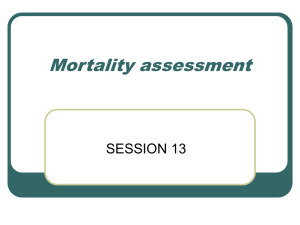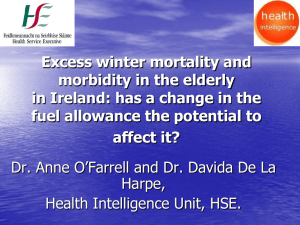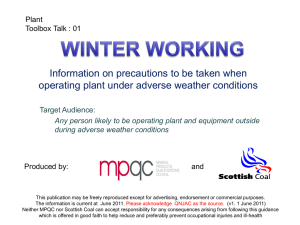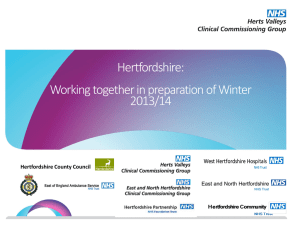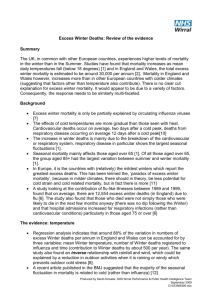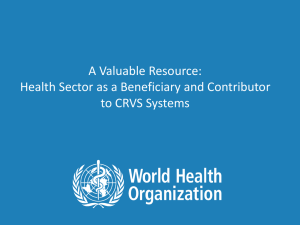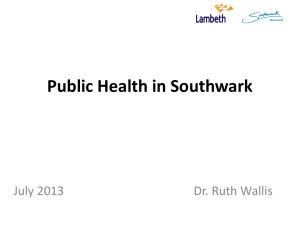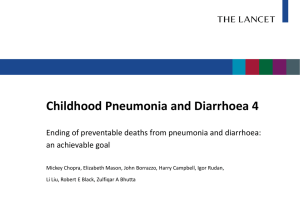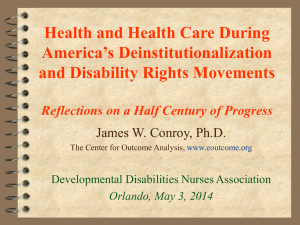Goodwin AgeUK MetOffice 28Nov12
advertisement
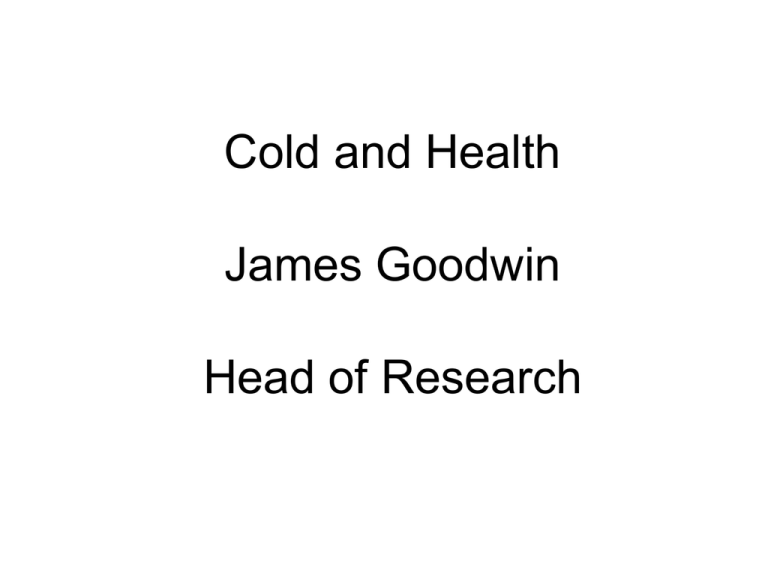
Cold and Health James Goodwin Head of Research Hippocrates 400BC On airs, waters, and places • Whoever wishes to investigate medicine properly, should proceed thus: in the first place to consider the seasons of the year, and what effects each of them produces for they are not at all alike, but differ much from themselves in regard to their changes. • Secondly he must study the warm and the cold winds, both those which are common to every country and those peculiar to a particular locality … Five Vital Questions • • • • • Why does health deteriorate in the winter? Does age make a difference? What is ‘Excess Winter Mortality’? What are its causes? Can we do anything about it? (1) Why does health deteriorate in the winter? Why does health deteriorate in the winter • Ill-health is associated with a number of winter factors, notably reducing photoperiod and cold temperature • We have tropical physiology • Darkness is associated with emotional responses and mental health • Cold is associated with physical and psychological responses (2) Does age make a difference? Does age make a difference? • Vulnerability to cold increases with age: – Declining immune system – Lower physiological reserve – Slower and less precise bodily responses, particularly temperature control, respiratory and cardio-vascular systems • The change is progressive and variable but real decrements start at about 75 years and accelerate thereafter Cold Exposure and Physiological Responses I Young subjects (n=11) Old subjects (n=11) Cold Exposure and Physiological Responses II Young subjects (n=11) • Old subjects (n=11) ◦ a e r Skin Temperature (Finger) in Young (n=9) and Elderly (n=9) Subjects at 6 and 21C 2 o m C e T 3 0 2 8 2 6 2 4 2 2 2 0 1 8 1 6 1 4 1 E o C 2 Y E 2 0 4 0 6 0 % C 2 f f 2 0 o Y p 3 T o C f o f T C 1 1 6 T 6 8 2 m T 0 V Oa x (3) What is ‘Excess Winter Mortality’? Excess Winter Mortality • EWM is the number of deaths occurring between 1st December and 31st March less the number of deaths in the rest of the year • Since 1841 there have been approximately 3 million avoidable deaths in the older population in the winter • For every 1◦C reduction in the average ambient temperature in the winter, there are 8,000 more deaths (Curwen M 1997) Ratio of observed to expected deaths Mortality and temperature distribution Frequency distribution of max. temperatures 1.5 1.25 1 Gradient represents strength of low temperaturemortality relationship .75 0 10 20 Maximum daily temperature C 30 Excess Winter Deaths LONDON, 1986-96 400 DAILY DEATHS 300 200 100 0 01jan1986 01jan1988 01jan1990 01jan1992 01jan1994 01jan1996 Inside vs Outside Cold • Few older people live in homes without central heating but many restrict their use of it mainly on grounds of cost (fuel poverty) • Moving from a cold home to outside cold carries significantly more risk to health than moving from a warm home • Relatively minor cold exposures in daily life are sufficient to induce significant hypertension and haemoconcentration • Linear inverse relationship between activity levels and indoor cold with increased outdoor excursions in older people living in cold homes Relative risk of death Inside Cold 1.6 Coldest 25% of homes 1.4 1.2 Warmest 25% of homes 1 .8 1Jan 1Apr 1Jul Date 1Oct 31Dec Euro-winter Study Notable Findings • Percentage increases in all cause mortality per 1C (below 18C) are greater in warm than in cold regions (eg Athens vs south Finland) • High indices of cold related mortality are associated with – high mean winter temperatures – low living room temperatures – limited bedroom heating – low clothing protection – physical activity • Lag effects exist between onset of cold and death (4) What are its causes? Causes of Winter Death • Less than 1% due to hypothermia • Small number of deaths due to influenza, except in epidemic years (eg winter ‘89/90) • Respiratory illness (eg COPD, bronchitis) 12 day’ lag effect’; deaths declining due to warmer homes • Thrombotic illness (eg MI, stroke) 3-7 day ‘lag effect’; deaths show little change over time and are related to outdoor cold exposure (5) Can we do anything about it? Aderdeen,Scotland 0-8°C in January Yakutsk ,Siberia -26.6°C All cause mortality unaffected Kuwait 8-18°C in January 1950/1951 1952/1953 1954/1955 1956/1957 1958/1959 1960/1961 1962/1963 1964/1965 1966/1967 1968/1969 1970/1971 1972/1973 1974/1975 1976/1977 1978/1979 1980/1981 1982/1983 1984/1985 1986/1987 1988/1989 1990/1991 1992/1993 1994/1995 1996/1997 1998/1999 2000/2001 2002/2003 2004/2005 2006/2007 2008/2009 50 Year Regression Data Excess Winter Mortality 1950 - 2010 120,000 100,000 80,000 60,000 40,000 20,000 0 Summary of the Evidence - Cold • Extremes of cold incur high rates of morbidity and mortality in older people via respiratory and thrombotic illness • Respiratory mortality appears to be falling due to warmer homes •Indoor and outdoor cold are independent risk factors • Predisposing factors appear to be: – age (frailty, co-morbidity) – home conditions – high-risk behaviour – social isolation – limited access to health and social care – social inequality Public Health Advice “We will not be bullied into good health by the likes of Mr Chadwick” The London Times, 1848
